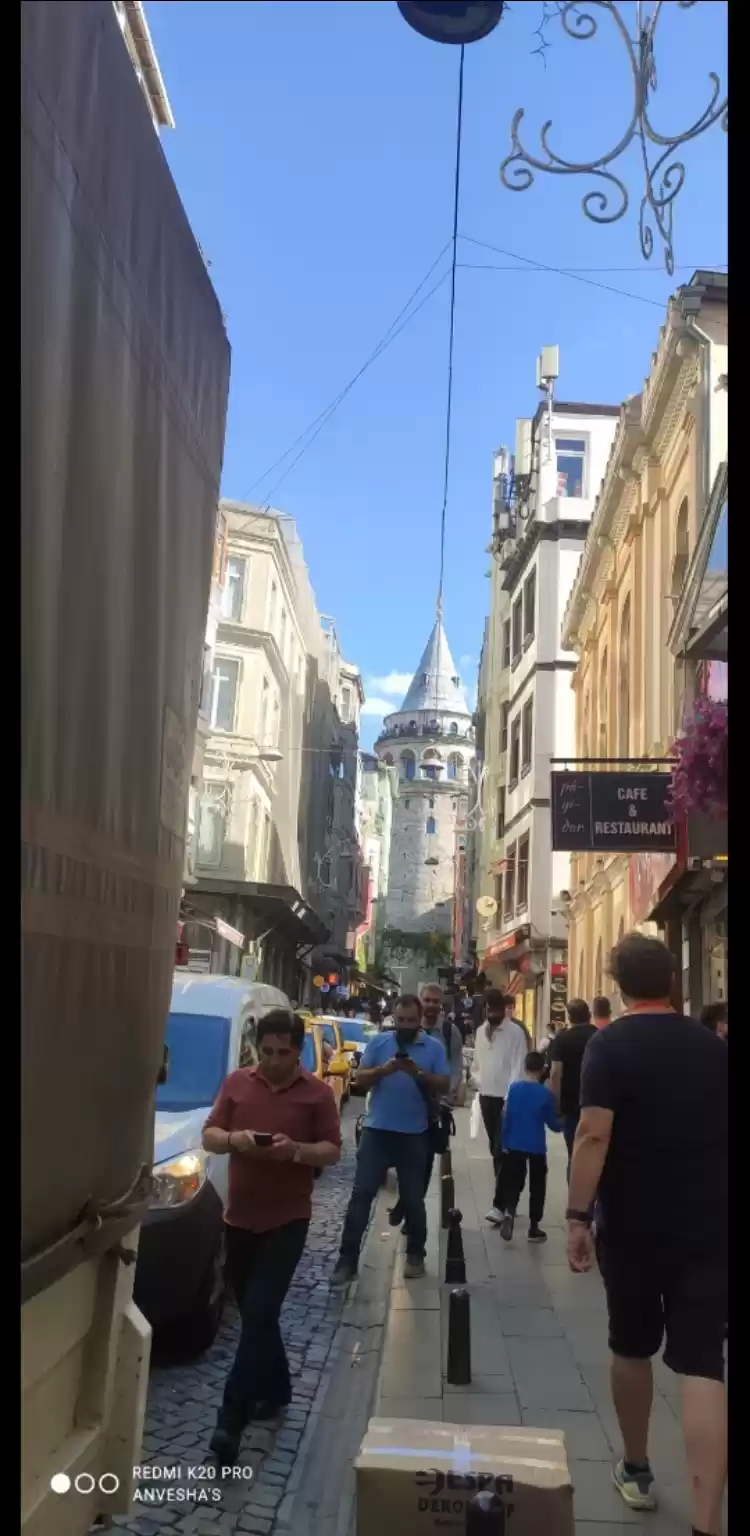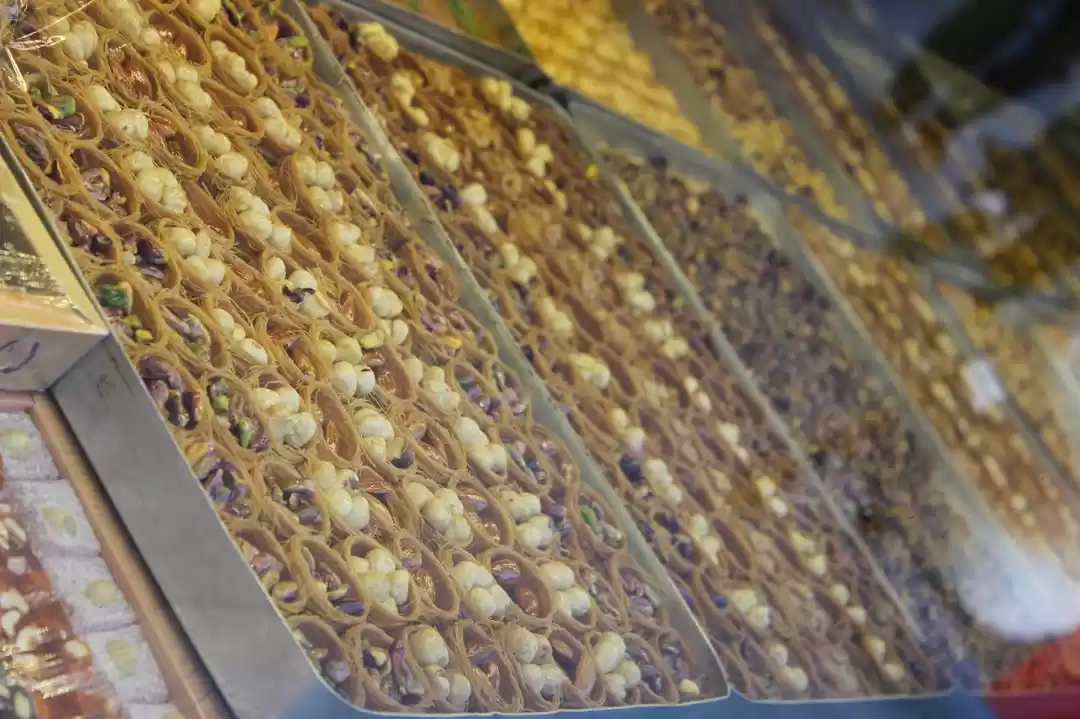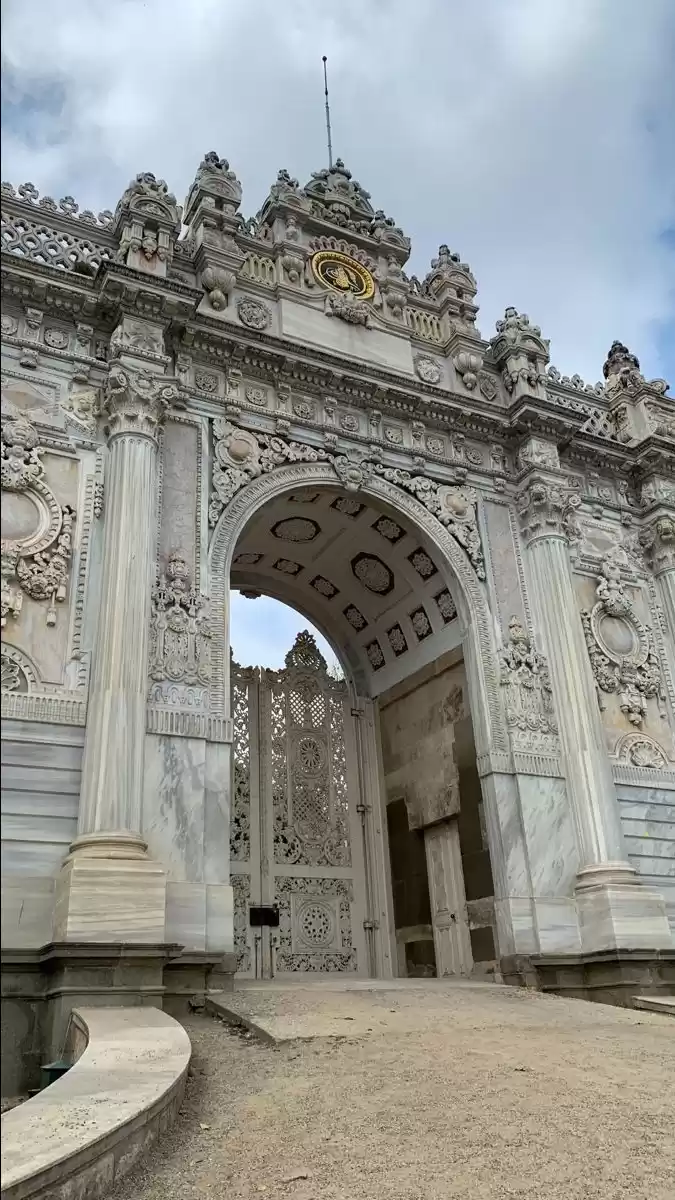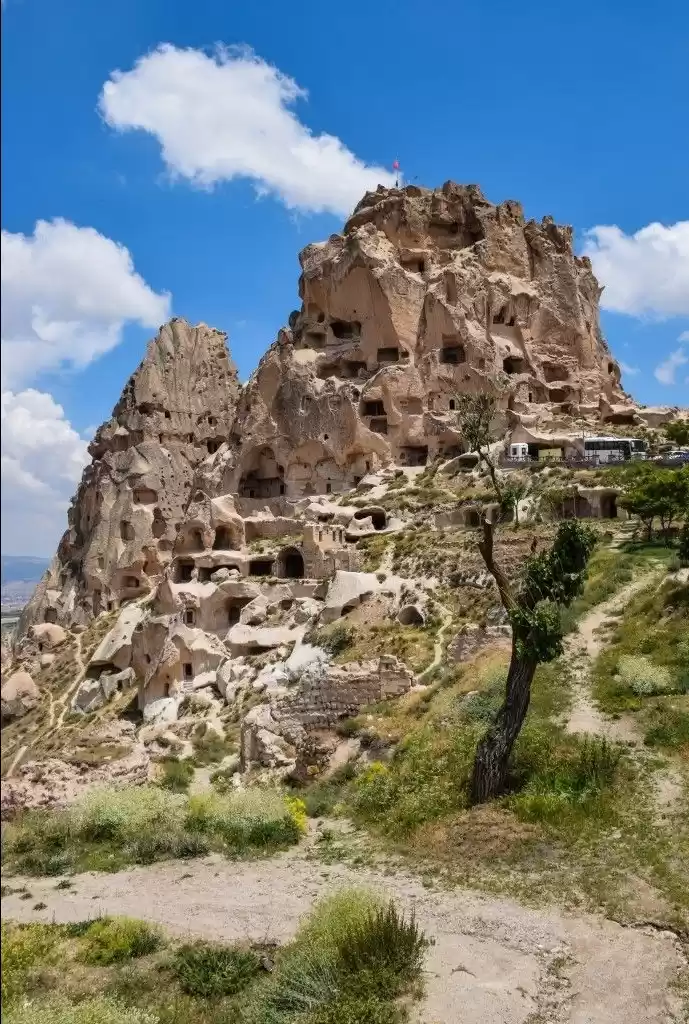Have you ever wondered what secrets lie beneath the ancient ruins of Turkey? If you are looking for a hidden gem that will take you back in time and reveal the fascinating history and culture of an ancient civilization, then you should visit Kaunos. Kaunos is an ancient city that was once a thriving port and a cultural center, located near the modern town of Dalyan in the Muğla province of Turkey. In this article, you will learn everything you need to know about Kaunos, its history, attractions, legends, and how to visit it. You will also find some of the best tours and activities that will make your visit to Kaunos a unique and memorable experience.
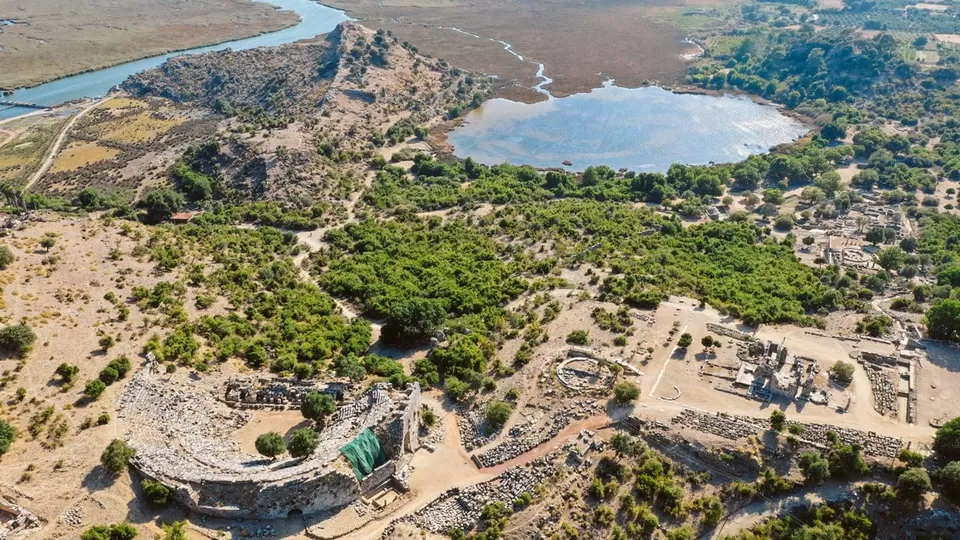
History of Kaunos
The name Kaunos comes from a mythological figure, who was the son of Miletus and Kyane. According to legend, Kaunos fell in love with his twin sister Byblis, who also had feelings for him. When their father found out, he banished them from his kingdom. Kaunos fled to the southwest coast of Anatolia, where he founded the city that bears his name. Byblis followed him, but when she realized that he did not want to see her, she killed herself by a spring. The spring was named after her, and it is said that its waters are salty because of her tears.
The history of Kaunos dates back to the prehistoric times, when it was inhabited by the Carians, a people who spoke a language related to the Anatolian languages. Kaunos was a prosperous city, thanks to its strategic location on the border between the Carian and the Lycian regions, and its access to the sea and the river Calbis (now Dalyan). Kaunos was also a cultural hub, where different influences and traditions merged and created a unique identity.
Kaunos witnessed the rise and fall of many empires and civilizations, such as the Persians, the Greeks, the Romans, and the Byzantines. Each of them left their mark on the city, in terms of architecture, art, religion, and politics. Kaunos was also involved in many wars and conflicts, such as the Ionian Revolt, the Peloponnesian War, the Mithridatic Wars, and the Arab-Byzantine Wars. Kaunos eventually declined and was abandoned in the 15th century, due to the silting of the harbor, the malaria epidemic, and the Ottoman conquest.
Attractions of Kaunos
Kaunos is a treasure trove of ancient monuments and structures, that showcase the rich and diverse heritage of the city. Some of the main attractions of Kaunos are:
- Rock tombs: These are the most iconic and impressive sights of Kaunos, carved into the cliffs along the river. They are the burial places of the kings and nobles of Kaunos, dating from the 4th to the 2nd century BC. They are decorated with reliefs and inscriptions, and they have a distinctive Lycian style, with a façade resembling a temple.
- Theater: This is a well-preserved and restored theater, built in the Hellenistic period and modified in the Roman period. It has a capacity of about 5000 spectators, and it was used for theatrical and musical performances, as well as gladiator fights and animal shows. It has a semi-circular orchestra, a stage building, and a cavea divided into three sections by two horizontal walkways.
- Basilica: This is a large and impressive building, located near the harbor. It was built in the 5th or 6th century AD, and it was used as a Christian church. It has a rectangular plan, with three naves separated by columns, and an apse at the east end. It has a mosaic floor, and some frescoes and inscriptions on the walls.
- Agora: This is the main public square and market place of Kaunos, located near the theater. It was built in the Roman period, and it was surrounded by porticoes, shops, and public buildings. It has a rectangular shape, with a monumental gate at the north side, and a fountain at the center.
- Temple of Demeter: This is a small and simple temple, dedicated to the goddess of agriculture and fertility, Demeter. It is located on a hill, overlooking the city and the river. It was built in the 2nd century BC, and it has a square plan, with a cella and a pronaos. It has some reliefs and inscriptions on the walls, and a statue of Demeter in the cella.
- Terrace temple: This is a mysterious and intriguing structure, located on a terrace above the theater. It is not clear to whom it was dedicated, or what its function was. It was built in the Hellenistic period, and it has a circular plan, with a colonnade and a staircase. It has some sculptures and inscriptions on the walls, and a sacrificial altar in the center.
- Wind measuring platform: This is a curious and unique structure, located on a hill, near the temple of Demeter. It was used to measure the direction and speed of the wind, for the benefit of the sailors and the farmers. It was built in the 2nd century BC, and it has a square plan, with four pillars and a roof. It has a bronze wind vane on the roof, and a sundial on the wall.
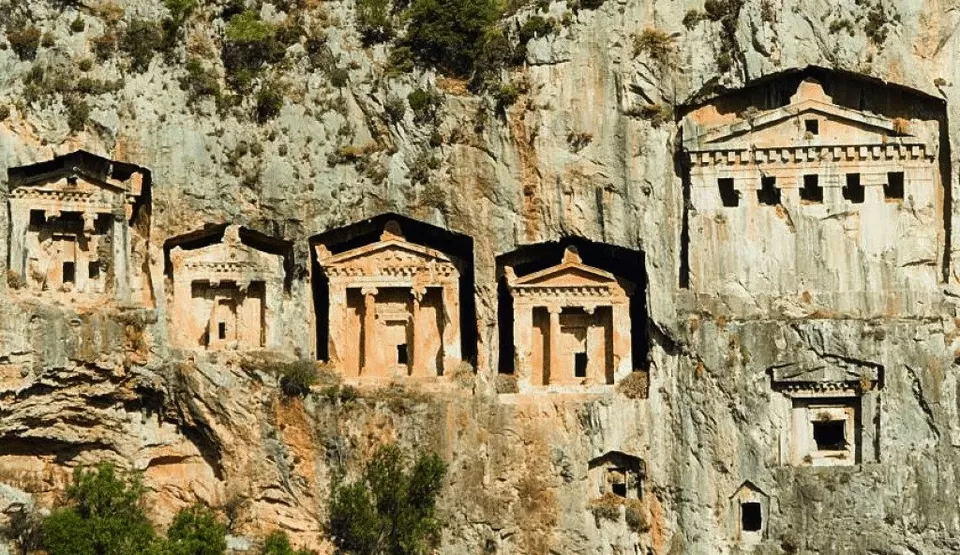
Legends of Kaunos
Kaunos is not only a place of history and culture, but also a place of myths and legends, that add to the charm and mystery of the ancient city. Some of the legends of Kaunos are:
- The story of Kaunos and Byblis: This is the tragic and romantic legend of the founders of Kaunos, who were twins and lovers. Their story is told by the ancient writers Ovid and Parthenius, and it is a classic example of the theme of incest and forbidden love in Greek mythology.
- The legend of the green-faced people: This is a strange and intriguing legend, that explains the origin of the peculiar facial features of some of the inhabitants of Kaunos. According to the legend, they were the descendants of a group of people who escaped from the city of Troy, after its fall. They settled in Kaunos, and they intermarried with the locals, creating a hybrid race. They had a greenish complexion, due to the copper content in the water and the soil of Kaunos.
- The mystery of the Dalyan King Tombs: This is a puzzling and unresolved mystery, that concerns the identity and the fate of the occupants of the rock tombs. According to some theories, they were the kings and queens of Kaunos, who ruled the city in its golden age. According to other theories, they were the invaders and conquerors of Kaunos, who plundered the city and its treasures. No one knows for sure, who they were, or what happened to them.
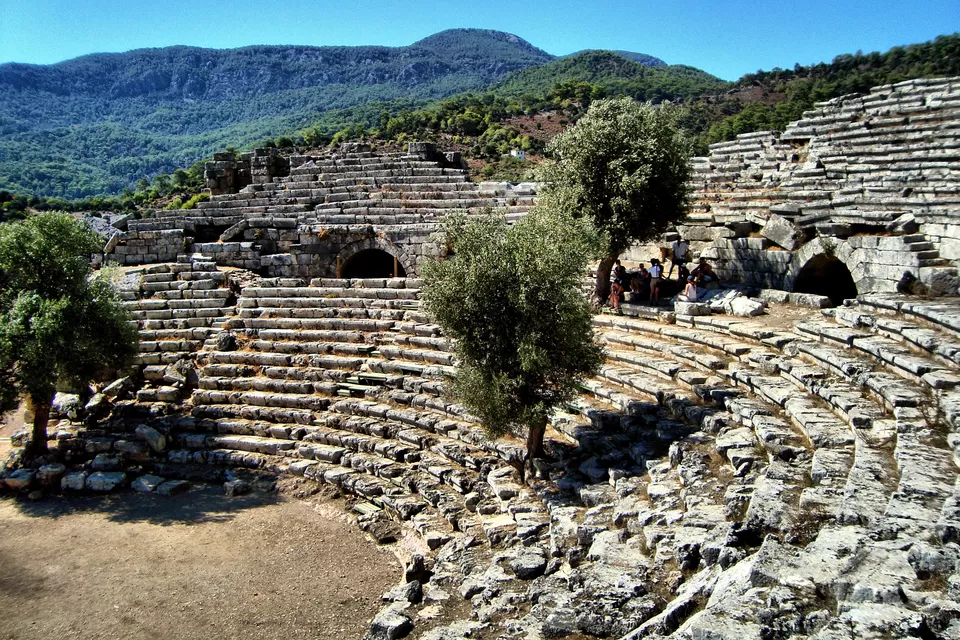
How to Visit Kaunos
If you are interested in visiting Kaunos, and exploring its secrets and wonders, here are some practical information and tips that will help you plan your trip:
- Best time to go: The best time to visit Kaunos is in the spring or autumn, when the weather is mild and pleasant, and the crowds are less. The summer can be very hot and humid, and the winter can be cold and rainy. The average temperature in Kaunos is 18°C, and the average rainfall is 985 mm per year.
- How to get there: The easiest way to get to Kaunos is by boat, from the town of Dalyan, which is about 25 km from the city of Ortaca, and 80 km from the city of Muğla. You can take a bus or a taxi from these cities to Dalyan, and then take a boat to Kaunos, along the scenic river. The boat ride takes about 30 minutes, and it costs about 10 TL per person. You can also rent a car or a bike, and drive or cycle to Kaunos, following the signs and the dirt road. The drive or the ride takes about 15 minutes, and it offers a beautiful view of the countryside and the mountains.
- What to bring: You should bring comfortable shoes, a hat, sunglasses, sunscreen, water, snacks, and a camera, when you visit Kaunos. You should also bring some cash, as there are no ATMs or credit card facilities in Kaunos. You should also bring some insect repellent, as there are some mosquitoes and flies in the area, especially near the river and the marshes.
- What to do: You should spend at least two hours in Kaunos, to see and appreciate all the attractions and the details. You can hire a guide, or buy a guidebook, to learn more about the history and the culture of Kaunos. You can also enjoy some of the activities and experiences that Kaunos offers, such as:
- Hiking: You can hike around the ancient city, and discover its hidden corners and secrets. You can also hike to the nearby hills and mountains, and enjoy the panoramic view of Kaunos and the surrounding landscape.
- Boating: You can boat along the river, and admire the rock tombs and the wildlife. You can also boat to the nearby Iztuzu Beach, which is a long and sandy beach, where you can swim, sunbathe, and see the endangered loggerhead turtles.
- Exploring: You can explore the nearby villages and towns, and experience the local culture and cuisine. You can also visit some of the other ancient sites in the region, such as Kaş, Patara, Xanthos, and Letoon.
- Discovering: You can discover some of the secrets and mysteries of Kaunos, by joining some of the tours and activities that offer a deeper and more interactive insight into the ancient city. You can also participate in some of the events and festivals that celebrate the heritage and the spirit of Kaunos, such as the Kaunos Culture and Art Festival, the Kaunos Rock Tomb Light Show, and the Kaunos Turtle Protection Project.
Conclusion
Kaunos is a hidden gem of ancient Turkey, that offers a unique and memorable experience for anyone who loves history, culture, and nature. Kaunos is a place where you can learn about the past, enjoy the present, and dream about the future. If you are looking for a destination that will surprise and delight you, then you should visit Kaunos. You will not regret it.
If you want to book a tour or an activity to Kaunos, or if you want to learn more about the ancient city, you can visit our website, or contact us. We will be happy to help you plan your trip, and make it unforgettable.


